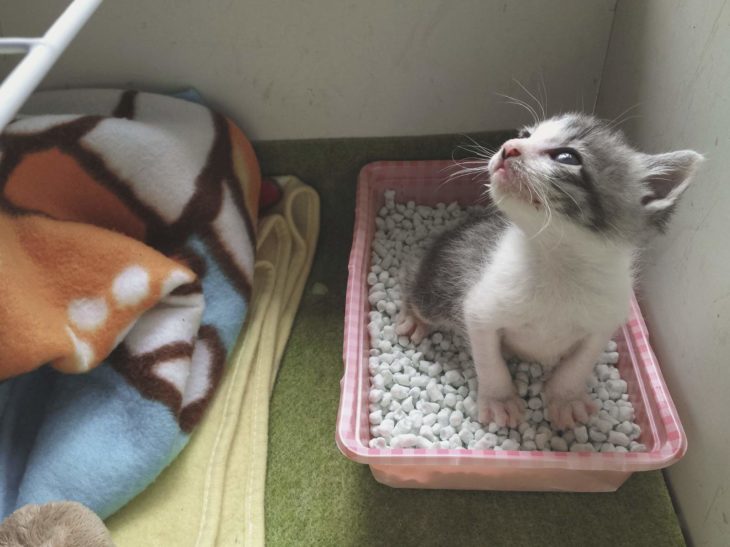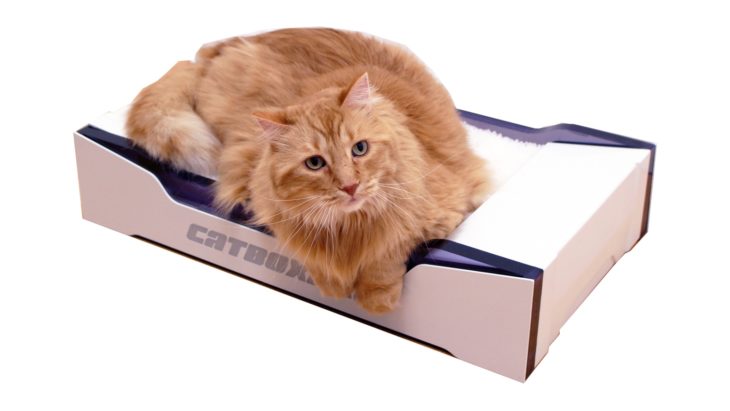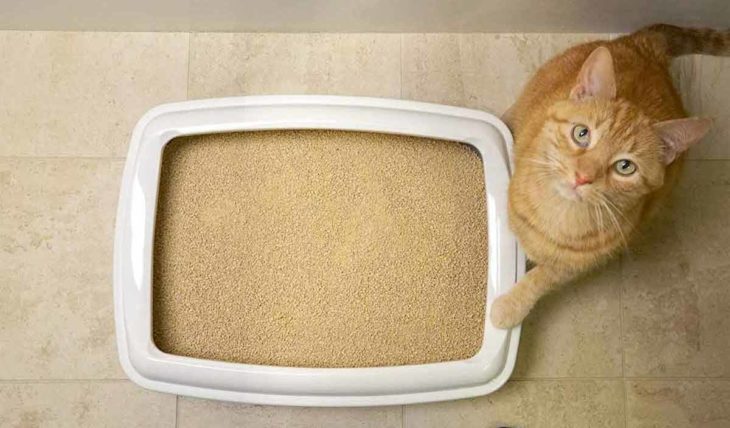I love my cats but I don’t like cleaning up after them. Finding the flushable cat litter has made the whole process easier by getting rid of the need to constantly clear out their litter box and scrub it clean to make sure my house doesn’t start to smell.
By comparing the different properties of our available brands, we can also take a look into the ups and downs of the types of cat litter as it now lessens the inconvenience of having to bag the clumps of urine and cat feces that regularly come up in the litter box.
Contents
What’s the Benefit of Flushable Cat Litter?
Easy Disposal
Marian P. McClure, founder of Catthink said, “One of the many benefits of using flushable cat litter is that it’s really easy to dispose of. From the name itself, you can dispose of your cat’s waste in the same way you dispose of your own – a quick flush down the toilet. This is extremely convenient for me since I don’t have to head out in the cold and just head into my bathroom instead.”
Safe for Environment
- Clay litter and Plastic bags
Many cat litter brands are still clay-based. The thing that I don’t like about clay cat litter is that it clumps and sticks to the sides of the litter box. While there are many “eco-friendly” and biodegradable cat litter options, the sealed plastics that a majority of cat owners use to dispose of the waste is not as quick to degrade nor as safe to the environment.
- Doesn’t go to landfills
It saves you the hassle and helps save the environment as well. Opting for the use of a flushable cat litter alternative is one easily adaptable way to go green. Since flushable cat litter is dumped into the toilet, it means that you don’t need to contribute to the growing piles in the landfills.

Source: thesprucepets
Is Flushable Cat Litter Safe for Plumbing?
There are many skeptics who are against the flushing down of materials, other than human feces, down the toilet. However, flushable cat litter brands have established rigorous testing procedures to ensure that their products do not clog up your pipes, sewers, and septic systems.
A safe tactic to reduce the chances of damaging the drainage system is to not dump it all in at the same time and, instead, drop small increments at a time. “Natural” or “biodegradable” cat litters are not the same as flushable cat litter and, unless labeled as the latter, should not be disposed into the toilet.
What Kind of Cat Litter is Flushable?
The best septic safe cat litters are made from natural materials such as wood or corn pulp which allow the products to absorb small amounts of moisture; when soaked, they break down to prevent clogging any pipes. Brands that are made of either clay or those that contain silica components are definite no-nos in terms of flush ability.
Clay-based cat litter is able to absorb and retain water and this causes clumping which will definitely lead to a clogged toilet. On the other hand, silica is a non-biodegradable component that will float around indefinitely in your sewage system, not only is this unsafe, it will also, eventually, cause a clog. So, using cat litters that are made with those components in the mix makes for a non-flushable litter.
Things to consider when you’re buying flushable cat litter
There are many things that a cat owner should consider before opting for a flush-safe cat litter brand. An educated cat owner needs to go through flushable cat litter reviews in order to determine what works best.
Tested flushable and septic-system safe by a manual factor
A first priority is to know whether it has been tested as a flushable and septic system safe by a manual factor. You should always check whether the flushable cat litter brand that you choose has undergone the proper checks and tests to prove that it will not clog up your pipes, sewers, and septic systems.
Biodegradable & Safe for the environment
Another major concern is whether the product is biodegradable and safe for the environment. I like using corn or wheat-based cat litters since I know they degrade faster and are also more eco-friendly. It’s your responsibility to know what the product is made of and how it would affect your cat and the environment.
Odor control
For your own ease, you will also need to check on whether the products have good odor control. Some people may think that since a lot of these products are organic, they wouldn’t have performed as good as other brands that are doused with chemicals to mask the smell. However, organic products are able to do just as well, and like me, you might also prefer the fresh and natural odor they give off.

Source: kickstarter
Low tracking & low dust
No one enjoys the smell of cat feces in their home nor would anyone want to have small particles of the cat litter all over the furniture and floors. One of the most annoying things with cat litter is that my cats tend to drag it all around the house. There are also some products that produce a lot of dust that is harmful to your lungs and your pet’s health.
This is why finding a product that your cat won’t track around so much, and that would not produce so much dust, would be an important factor when choosing your cat litter brand.
Non-clumping or less clumping
Many cat owners would look for how good a brand is able to form clumps because it makes it easier to scoop and covers up the odors. However, for a flushable cat litter brand, you need to look for something that either doesn’t clump or clumps less.
If your cat litter forms large clumps, this makes it difficult to flush down the toilet and may end up causing a pipe to clog up. Also, brands that form big clumps also become wasteful as a lot of the cat litter gets used up to form them. If you do decide to go for a clumping cat litter brand, make sure that it has been tested and verified flushable by a manual factor.
Why You Shouldn’t Flush Cat Litter
Aren’t Designed for Septic Systems
Our septic systems and sewage that lead to sewage treatment plants were created to handle sewage containing human waste and, specifically only have chemicals to breakdown the bacteria and organisms that are often present in human waste.
Introducing parasites into the waterways
Flushing down cat feces and cat litter add in a whole new ecosystem of microorganisms into the mix, most of which are water treatment plants are unprepared to handle. One of these is the Toxoplasma gondii parasite, which has been found to be a health hazard to other animals and to humans with compromised immune systems.

Source: thedearlab
If You are Living in Coastal Homes
People living in coastal homes whose sewage systems lead out to the sea endanger the marine ecosystems by dumping fecal matter containing foreign microorganisms into the oceans. In the 1980s, the New York Bight experienced a major decline in marine life due to oxygen depletion which was caused by sewage disposal.
State/Federal Government Regulations
Be wary of State/Federal Government Regulations. There are some areas where the local government outright bans the flushing of pet waste. For example, the State of Rhode Island’s Department of Health, specifically says to pet owners, “Do not flush pet waste down your toilet.”
Problematic Plumbing System
If you are starting to experience problems with your plumbing, flushing cat waste down your pipes may not be a good idea. In this case, it would be best to start looking for other ways to dispose of your cat litter to prevent any further problems that may only result in your whole house smelling like cat feces. Another possible solution is to train your cat to poo and wee outside so that you wouldn’t need cat litter in the first place, for this option to work a lot of constant training is needed and a cat flap too. Restedpaws.co.uk have a wide range of cat flaps if you are willing to put the work into training your furry loved one.
